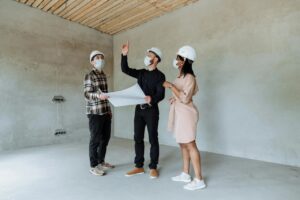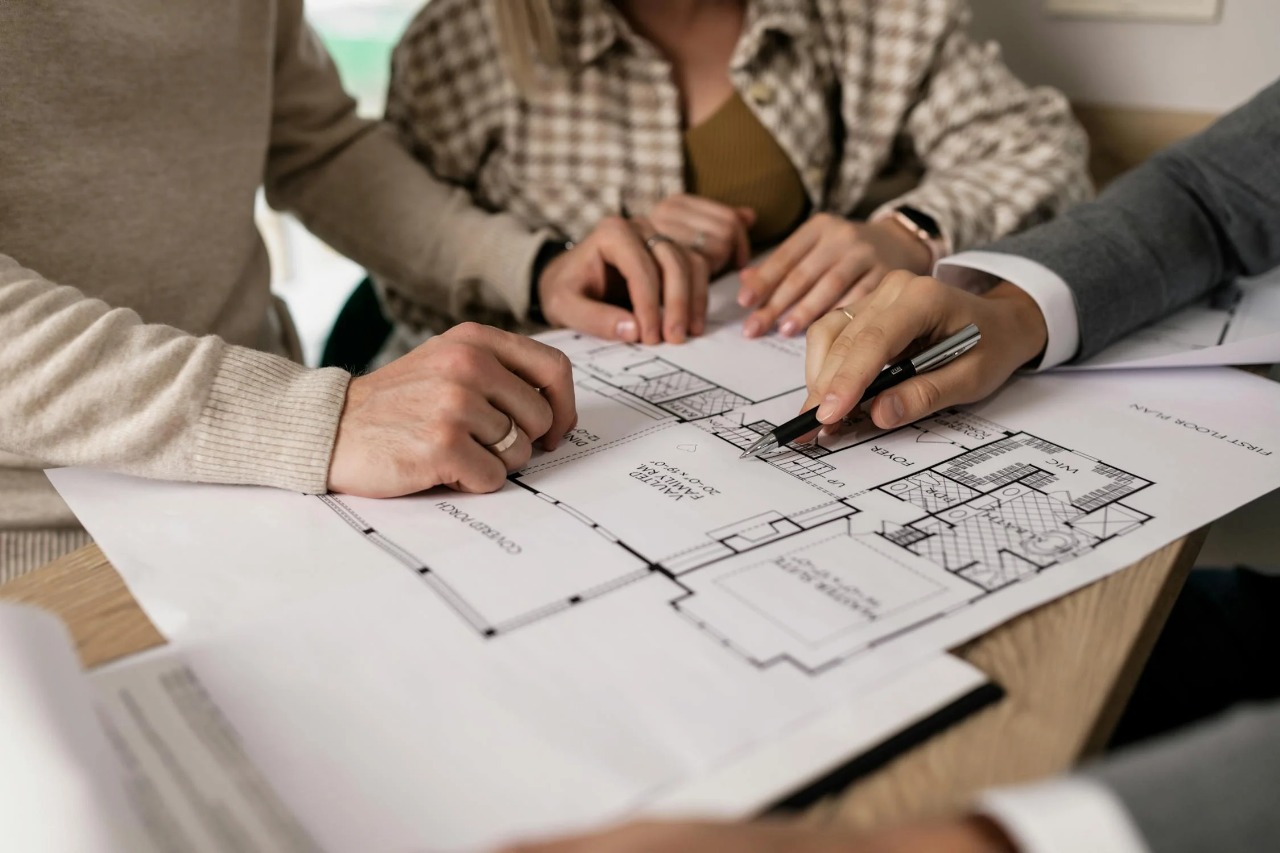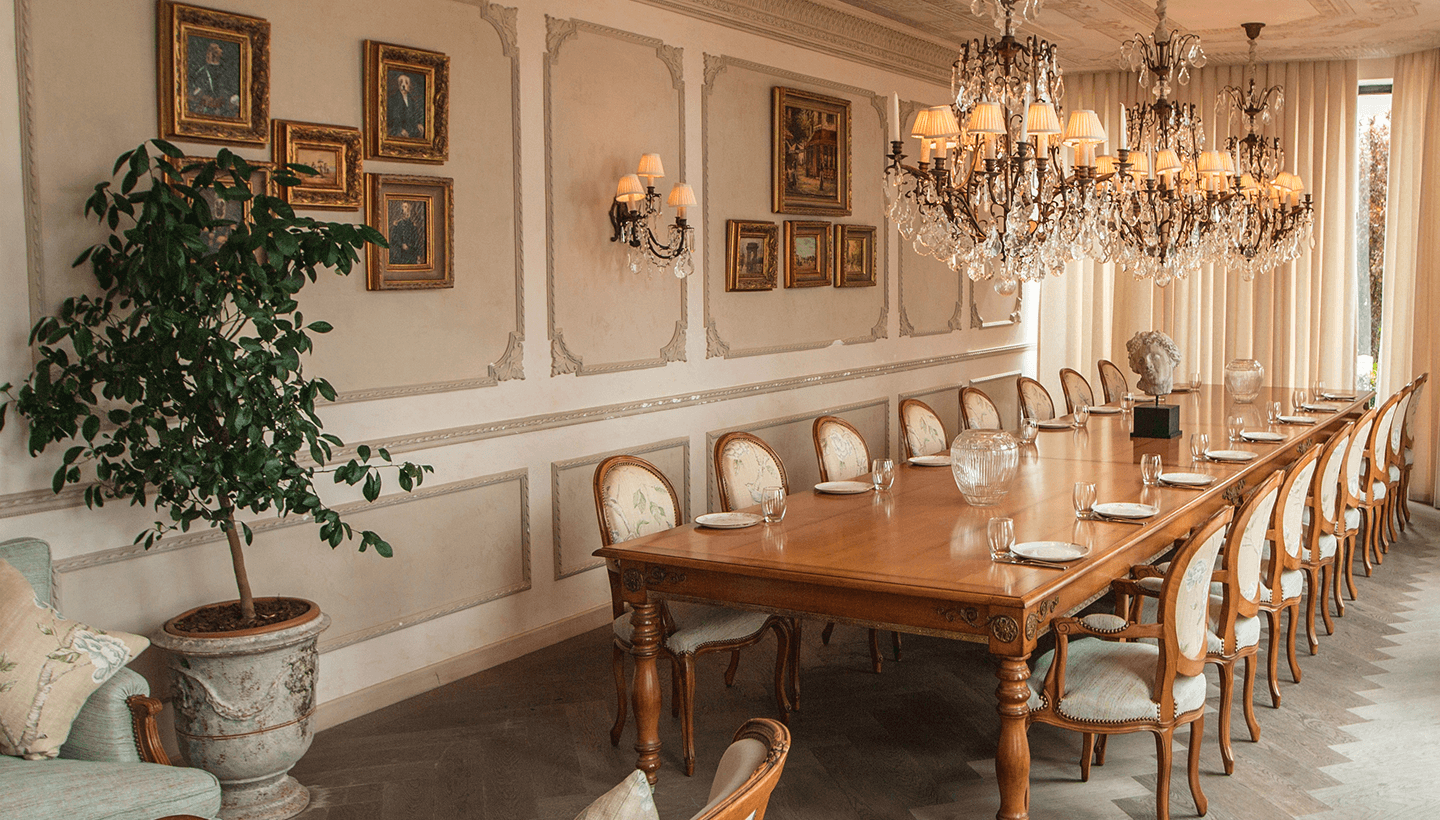The landscape of modern living is undergoing a profound transformation, with interior space planning at the forefront of this evolution. The marketplace for multi-purpose rooms will continue to grow throughout 2025 because individuals now adjust their lifestyles and work remotely while paying more attention to wellness and sustainability. The following blog evaluates how interior designers use space planning to invent multi-use rooms together with their rationale for developing effective functional yet motivational areas.
The Rise of Multi-Purpose Rooms
Room-specific design concepts have started displaying clear signs of disappearance. The current residential architecture requires homes to execute a multitude of roles using the same available space as they become both a workplace and workout facility and entertainment hub and rest area. People have changed their lifestyle preferences towards flexible and efficient yet comfortable living spaces.
The need for multi-purpose interiors will become mandatory for every space by the year 2025. Modern designed living spaces achieve distinction by merging easily between dining spaces and libraries as well as between bedrooms and home theaters. Strategic interior space planning enables versatile functionality because it optimizes the area to reach peak utility while maintaining beautiful design.
Why Interior Space Planning Matters
A multi-purpose room requires interior space planning for it to achieve success. To achieve successful space planning begins with using space analysis to decide appropriate layouts and adopting furniture and features which allow multiple activities. A functional area should present an open yet well-organized space which can adjust to various requirements..
Key benefits of effective interior design space planning include:
- Maximized use of available space
- Enhanced room functionality
- Improved traffic flow and accessibility
- A harmonious balance between style and comfort
- Reduced clutter and increased organization7
Principles of Interior Design Space Planning for Multi-Purpose Rooms
To achieve a truly functional multi-purpose room, certain principles of interior design space planning must be observed:
- Define Zones Clearly
Well-designed multi-purpose spaces distinguish areas using simple signals which include rugs and customized lighting methods along with furniture organization. The living room consists of a separate reading nook workspace and entertainment area which maintain distinct visual appearances but preserve unified content.
- Prioritize Flexibility
The necessity of furniture which can perform various duties cannot be overstated. Fabricated modular couches in addition to extensions tables and foldable desks function as essential multi-use furniture products. The adaptable nature of the room enables changes between functions across home and guest hosting situations and working sessions.
- Optimize Storage
Smart storage solutions are critical for maintaining order in a space with varied uses. Built-in shelves, hidden cabinets, and multi-functional furniture help keep clutter at bay, ensuring the room remains inviting and efficient.
- Consider Lighting and Acoustics
Lighting plays a pivotal role in setting the mood for different activities. Adjustable lighting systems, layered with task and ambient options, can transform a workspace into a cozy relaxation zone. Similarly, acoustic treatments may be necessary to ensure privacy and comfort, especially in rooms that double as offices or entertainment areas.
- Embrace Technology
The incorporation of voice command lighting and concealed charging facilities with climate control automation powers up multi-purpose areas. Customers now benefit from modern technology that lets them easily change room functions with a simple button command.

2025 Interior Trends Fueling Multi-Purpose Spaces
Several key trends in interior design space planning are driving the popularity and effectiveness of multi-purpose rooms in 2025:
- Minimalism with Comfort: The minimalist aesthetic remains strong, but with a cozy twist-soft textiles, warm lighting, and natural materials make multi-use spaces feel inviting rather than sterile.
- Sustainable and Natural Materials:Eco-friendly choices and biophilic design elements (like indoor plants and natural textures) are being incorporated to promote wellness and sustainability.
- Bold Colors and Textures:Vibrant color palettes and tactile finishes are replacing bland, neutral spaces, adding personality and depth to rooms that serve multiple functions.
- Integrated Outdoor Living:Modern design reunites indoor and outdoor spaces so that interiors meet the functionality of outdoor spaces which creates new possibilities for living with multiple uses.
- Personalization and Storytelling: The inhabitants now customize their spaces to show their individual characteristics through vintage and modern pieces together with handmade accessories and personal objects.
The Role of Professionals in Interior Space Planning
Do-it-yourself approaches exist in great numbers but expert interior design expertise provides maximum potential for interior design space planning achievements. Professionals who specialize in design apply their trained perspective to maintain both functional and attractive components in every element. Through their expertise designers provide homeowners with knowledge about up-to-date design elements and materials for making decisions that will deliver lasting results.
Looking Ahead: The Future of Multi-Purpose Rooms
People’s lifestyles will keep changing which will improve the need for dynamic spaces with efficiency and visually appealing qualities. Interior space planning will remain an essential field because it determines home appearance and life functionality as well as work and social capabilities within domestic spaces.
In 2025 and beyond, expect to see:
- Increased use of smart, modular furniture
- Greater emphasis on sustainability and wellness
- More creative zoning and flexible layouts
- A continued blending of indoor and outdoor living
- Spaces designed for both solitude and socializing, tailored to the unique rhythms of each household
Conclusion
The trend of multi-purpose rooms in 2025 is a testament to the power of interior space planning. By thoughtfully analyzing needs, maximizing functionality, and embracing the latest design innovations, homeowners can create spaces that are not only versatile and efficient but also deeply personal and inspiring. Expert interior design space planning will increase in importance through 2025 because borders between work and leisure and wellness activities keep dissolving thus affecting the way people will live in the future room by room.
At Spazi Design, we specialize in creating thoughtfully planned interiors that adapt to your lifestyle. Visit Usto schedule your consultation and discover how our expert interior space planning services can help you maximize your home’s potential. Let’s design spaces that work as hard as you do-beautiful, functional, and perfectly tailored to your unique needs.
FAQs
Q1: How do I start planning a multi-purpose room?
Assess your needs, define activity zones, choose flexible furniture, and plan smart storage to keep the space organized.
Q2: What furniture is best for multi-purpose rooms?
Modular, foldable, and convertible furniture like sofa beds and wall-mounted desks work best.
Q3: How can I make a small room feel spacious and functional?
Use light colors, mirrors, vertical storage, and multi-functional furniture to maximize space.
Q4: Should I hire a professional for interior space planning?
Yes, professionals ensure efficient layouts and stylish designs tailored to your lifestyle.




